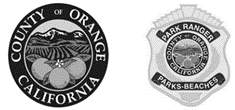Addressing the calculation of patent term extensions (PTEs) under the Hatch-Waxman Act, the US Court of Appeals for the Federal Circuit affirmed a district court decision that under the act the issue date of the original patent should be used to calculate the extension, not the reissue date. Merck Sharp & Dohme B.V. v. Aurobindo Pharma USA, Inc., Case No. 23-2254 (Fed. Cir. Mar. 13, 2025) (Dyk, Mayer, Reyna, JJ.)
Merck owns a patent that is directed to a class of 6-mercapto-cyclodextrin derivatives. Four months after the patent issued, Merck applied to the US Food & Drug Administration (FDA) for approval of sugammadex, which it intended to market as Bridion®. During FDA’s review of Merck’s new drug application (NDA), Merck filed a reissue application that included narrower claims. The reissue application issued and included all the original claims and 12 additional claims. FDA regulatory review continued throughout the examination of the reissue application and extended almost two years beyond the date the patent reissued. In all, the FDA regulatory review lasted nearly 12 years.
The Hatch-Waxman Act provides owners of patents related to pharmaceutical products a process to extend the term of their patent rights to compensate for time lost during regulatory review of their NDAs. The act contains a clause providing that “the term of a patent . . . shall be extended by the time equal to the regulatory review period . . . occur[ring] after the date the patent is issued.” Having been unable to market the invention covered by the patent for almost 12 years because of FDA’s regulatory review, Merck filed a PTE application for its reissue patent seeking a five-year extension (the maximum allowed under the act) based on the patent’s original issue date. The US Patent & Trademark Office (PTO) agreed and granted the five-year extension.
Between the reissue date and the PTO’s grant of the five-year extension, Aurobindo and other generic manufacturers had filed abbreviated new drug applications (ANDAs) seeking to market generic versions of Bridion®. Merck sued for infringement. At trial, Aurobindo argued that the PTO improperly calculated the PTE by using the original issue date instead of the reissue date because only 686 days of FDA’s regulatory review occurred after the reissue date, as opposed to the almost 12 years which had passed since the initial issue date. The district court disagreed, finding that Aurobindo’s proposed construction “would undermine the purpose of the Hatch-Waxman Act.” Aurobindo appealed.
Aurobindo argued that the act’s reference to “the patent” referred to the reissue patent because that is the patent for which the patentee was seeking term extension. Merck argued that the act’s text, read in light of other patent statutes and the history of patent reissue, required the opposite conclusion (i.e., a PTE based on the original issue date).
The Federal Circuit agreed with Merck, explaining that while the language of the PTE text may be ambiguous, that ambiguity may be resolved by considering the PTE text in light of the history of [...]
Continue Reading
read more

 Subscribe
Subscribe




